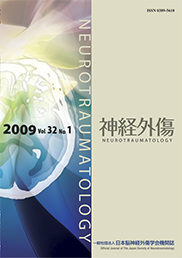The management of neurosurgical emergencies is associated with many problems in a depopulated area. The depopulated Tsugaru distinct has only 2 neurosurgical units and many patients have to be transferred from the district general hospital. Since 1989, telemedicine by using an image transfer system has been used to increase diagnostic accuracy and to achieve improved results in neurosurgical emergencies. In this report, we describe the usefulness of telemedicine for diagnosing and treating head injury.
An image transfer system was installed at our hospital and at 11 regional hospitals in the Tsugaru district. Between January 2005 and September 2008, 367 patients were admitted to our hospital, and consultations were performed for 160 head trauma patients using this system including 65 patients who were transferred from the district general hospital. We divided these patients into 3 groups: (1) those who were admitted directly in our hospital; (2) those who were administered telemedicine using an image transfer system; (3) those who had telephone consultation as well as an analysis of the diagnosis. Glasgow Coma Scale, treatment, the interval until surgery, Glasgow Outcome Scale at discharge, the average hospitalized admission and the place of discharge from hospital.
The number of mild cases in the group of patients who were admitted directly in our hospital was more than that of those receiving telemedicine or telephone consultation. This difference can be attributed to the fact that although the neurosurgeon or doctor initially diagnosed the patients, the mild cases were not transferred from the regional hospital. The interval until surgery was the shortest in the group diagnosed using telemedicine, because the neurosurgeon diagnosed the patient before transfer and was able to prepare for surgery prior to arrival. The Glasgow Outcome Scale scores of patients directly admitted in our hospital tended to be worse than those of the other groups, because our hospital is a tertiary medical care and many serious cases are transported elsewhere. However, the scores were not significantly different.
The image transfer system in telemedicine seems to be beneficial for reducing unnecessary transfers and for shortening the interval until surgery.
抄録全体を表示
